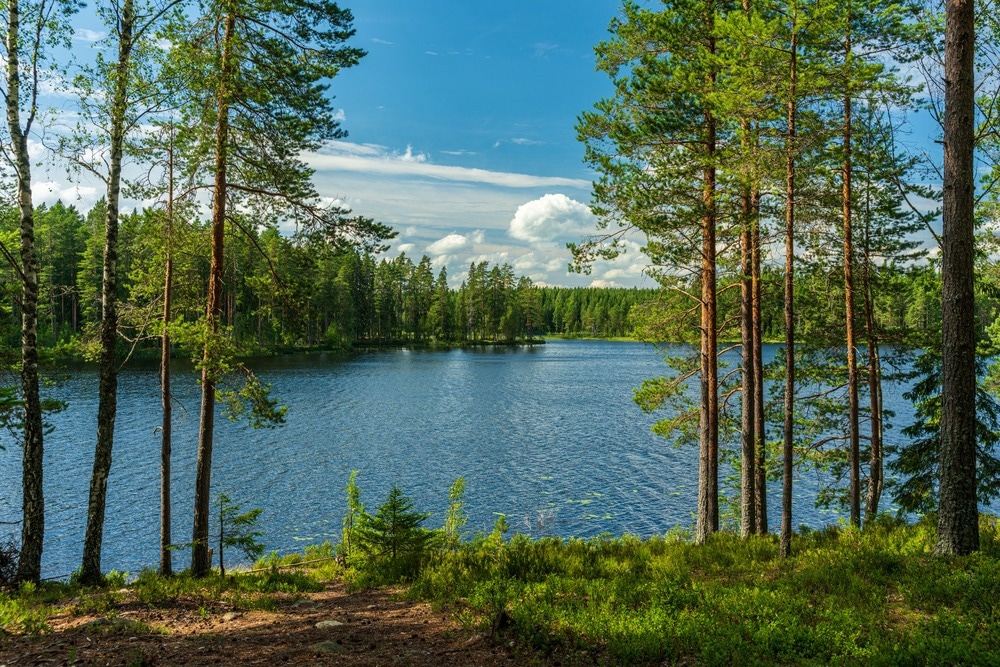A study published in Remote Sensing used satellite images to evaluate algorithms that retrieve the diffuse attenuation coefficient of photosynthetically active radiation (KdPAR) in Lake Villarrica, Chile. This study suggests that combining satellites with in situ data can be valuable for analyzing aquatic systems' water quality dynamics and bio-optical state.

Study: Assessment of the Diffuse Attenuation Coefficient of Photosynthetically Active Radiation in a Chilean Lake. Image Credit: Magnus Binnerstam/Shutterstock.com
Significance of Determining Light Attenuation Coefficients in Aquatic System
Water transparency relates to the behavior of light in aquatic mediums. Changes in water transparency can have detrimental effects on the biological components of an aquatic system, which may have adapted to certain light penetration conditions.
A parameter that helps determine aquatic biological components is the diffuse attenuation coefficient of photosynthetically active radiation (KdPAR). It measures the penetration capability of solar photosynthetically active radiation incident on the water to evaluate its turbidity or transparency.
KdPAR is frequently calculated indirectly using the Secchi disk (SD). When KdPAR is associated with Secchi disk optical depth, it is possible to classify water physically according to its color. The color can be read as a measure of water transparency or turbidity, and it has been a valuable tool in various investigations.
KdPAR measurements are critical for determining the optimal zones for the growth of photosynthetic activity and aquatic life.
Satellite Remote Sensing to Retrieve KdPAR
The geographical and temporal variations of KdPAR can be estimated and monitored via remote sensing.
Several algorithms, such as the conventional quasi-analytical approach (QAA), have been developed to determine the PAR radiation attenuation coefficient based on spectral remote-sensing reflectance.
In addition, algorithms based on satellite data can give regional and global coverage of KdPAR at a high temporal and spatial resolution. This coverage can enhance our understanding of aquatic systems' biological, chemical, and physical processes.
Optical Classification of Water
N. Jerlov, an oceanographer, devised an optical categorization of the ocean (I, II and III) and coastal water (C1, C3, C5, C7, C9) based on the light attenuation coefficients. However, Jerlov's work was not applied to freshwater habitats.
Therefore, a unique and practical optical categorizing freshwater environments would be highly innovative.
Study Area: Lake Villarrica
Chile features several lake areas crucial for providing freshwater reserves and various ecological services. The study area of this research is Lake Villarrica, located in Southern Chile. It is an Araucanian lake surrounded by significant human activity.
It is one of the most studied lakes in Chile; however, the KdPAR parameters of this lake have not been significantly researched. Therefore, there is still a great deal of work to be done.
Using Satellites and In-Situ Data to Analyze Bio-Optical State of Water
The hypothesis investigated in this study is whether KdPAR derived from the Secchi disk could be related to a particular optical water type and then be derived from satellite data, expanding the scope of the SD approach's application and enhancing its value for comprehending the spatiotemporal distribution of light attenuation coefficient in Lake Villarrica.
Researchers used Landsat and sentinel images to evaluate four algorithms to estimate the KdPAR at six sampling stations in Lake Villarrica. The ACOLITE module's data from the algorithms was validated using in-situ measurements from sampling sites.
The inland aquatic system was classified using Jerlov's classification. The relationship between the meteorological parameters, KdPAR, and an optical classification of the inland aquatic ecosystem was investigated.
Important Findings of the Study
Using Jerlov's categorization, the lake was assigned to a distinct optical water type based on SD-derived KdPAR. According to Jerlov delineations, Lake Villarrica's water can be optically categorized as coastal type C1 and oceanic type III, which aligns with the lake's trophic state designation.
According to the lake's biological, chemical, and physical characteristics, it is mesotrophic, a natural process that all aquatic systems go through. However, it has been amplified in Lake Villarrica by the tourist activity and intense development in its basin.
Local climatic variables correlate with the spatial and temporal distribution of KdPAR values. Seasonal variations in Lake Villarrica's aquatic system's physical and biological properties significantly impact KdPAR.
Precipitation and wind are the most important variables affecting PAR radiation attenuation coefficient and water transparency. Strong precipitation and wind events are associated with elevated KdPAR values, suggesting that they result from sediment resuspension.
The next step will be to investigate the relationship between the results of this study on the spatial and temporal behavior of water transparency and events that influence transparency, such as algae blooms.
Reference
Rodríguez-López, L., González-Rodríguez, L., Duran-Llacer, I., García, W., Cardenas, R., & Urrutia, R. (2022). Assessment of the Diffuse Attenuation Coefficient of Photosynthetically Active Radiation in a Chilean Lake. Remote Sensing. https://www.mdpi.com/2072-4292/14/18/4568/htm
Disclaimer: The views expressed here are those of the author expressed in their private capacity and do not necessarily represent the views of AZoM.com Limited T/A AZoNetwork the owner and operator of this website. This disclaimer forms part of the Terms and conditions of use of this website.